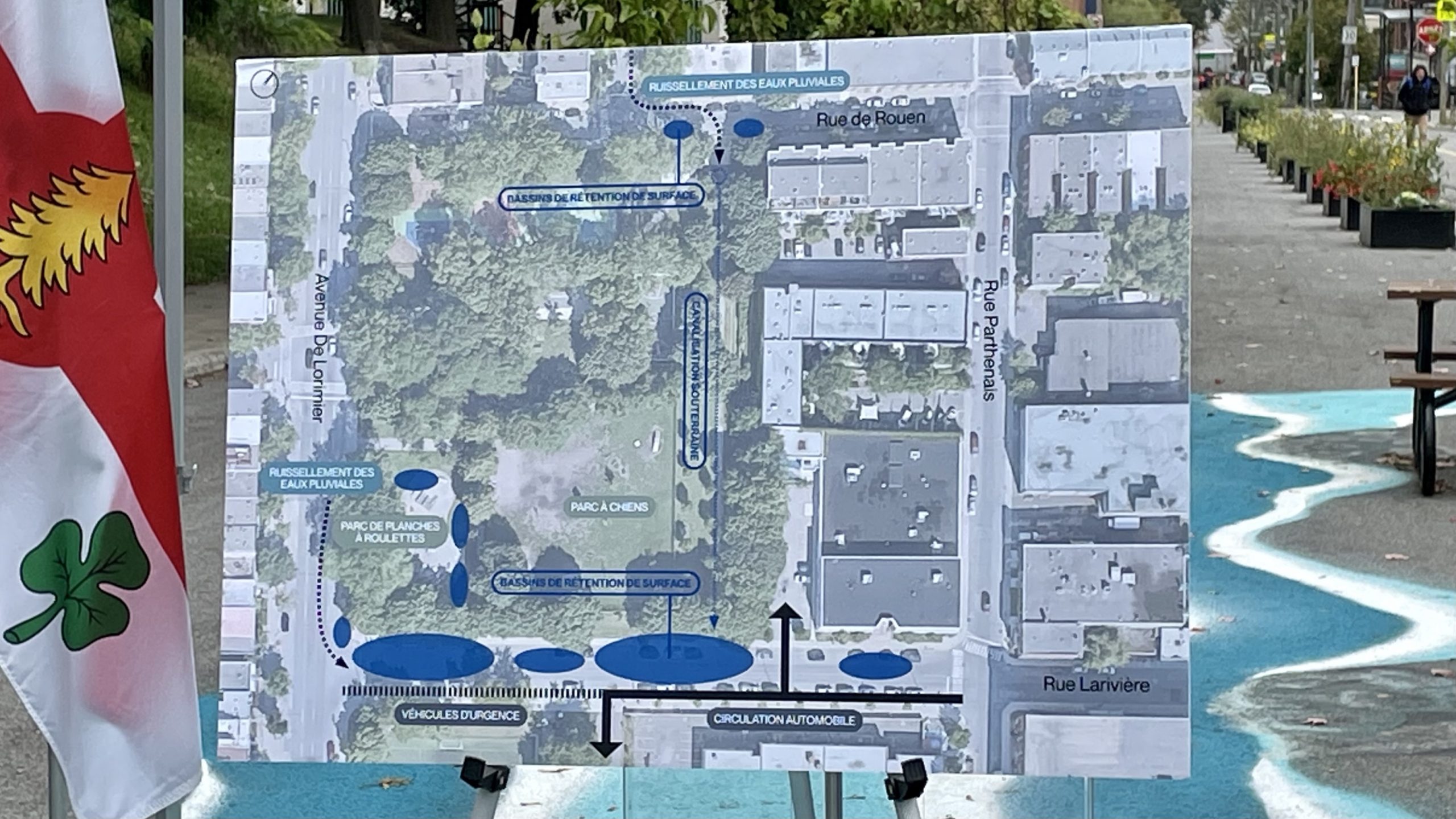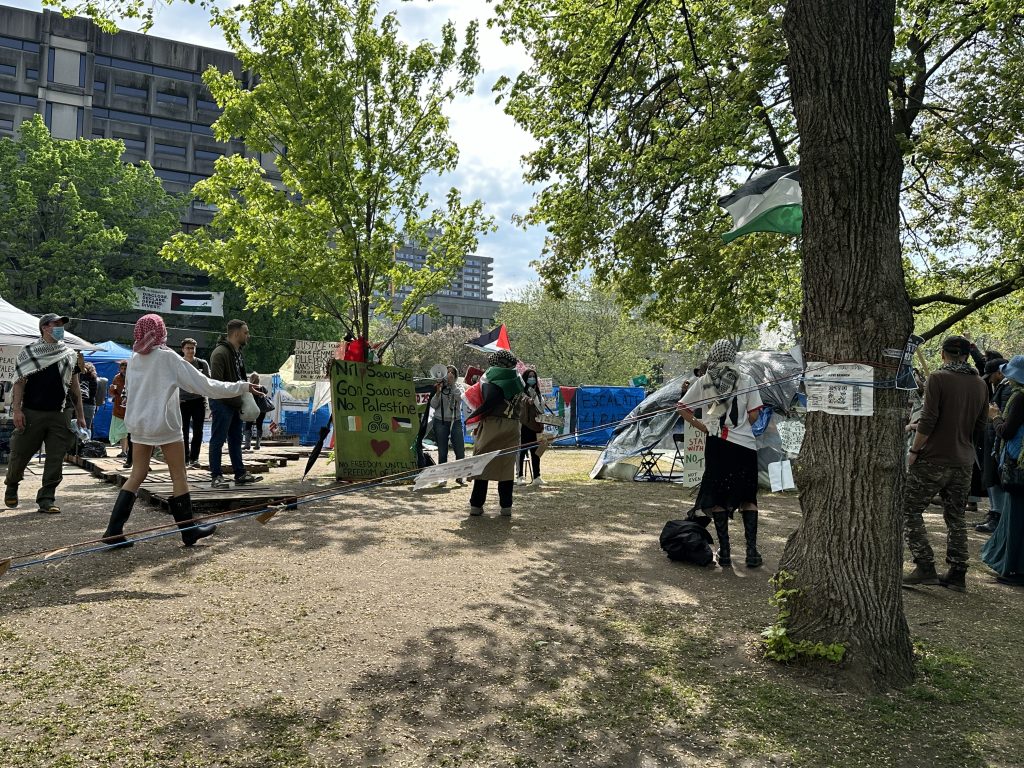Montreal creating 1st ‘sponge street’ to withstand heavy rainfall
Posted October 10, 2023 6:43 pm.
The City of Montreal is creating its first sponge street to counter the effects of heavy rainfall.
Larivière Street near De Lorimier Avenue in the Ville-Marie borough will be redeveloped.
The street will have several surface retention basins allowing the accumulation 900 cubic metres of stormwater. There will also be a new drainage network to direct runoff from streets located higher up.
“It’s really a way to retain the water before it goes all in the sewage system and it’s full capacity,” said Montreal Mayor Valérie Plante.
“A sponge street is one solution but it’s not the solution, it’s part of a cocktail of different elements we put together.”
Sponge streets are part of the city’s goal of creating green infrastructure that would retain the equivalent of three Olympic swimming pools.
The work is planned for spring 2025, with public consultations to take place first. It is expected to cost $5.9 million.
RELATED:
- Montreal converting Lachine playground into ‘sponge park’ as a solution to flooding
- Montreal to create more parks and “sponge” sidewalks to withstand the rain
Over the next two years, the City of Montreal vows to create nearly 30 parks and 400 “sponge” sidewalks to better withstand heavy rain.
Since 2022, the city says it has created seven sponge parks and 800 sponge sidewalks.
Many cities around the world, like Rotterdam, have successfully implemented urban sponge spaces. In 2022, Montreal ranked fourth “spongiest” city by the sustainable development firm Arup.
—With files from Diona Macalinga




